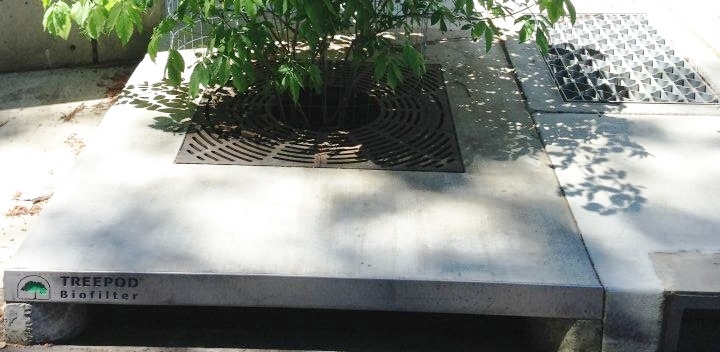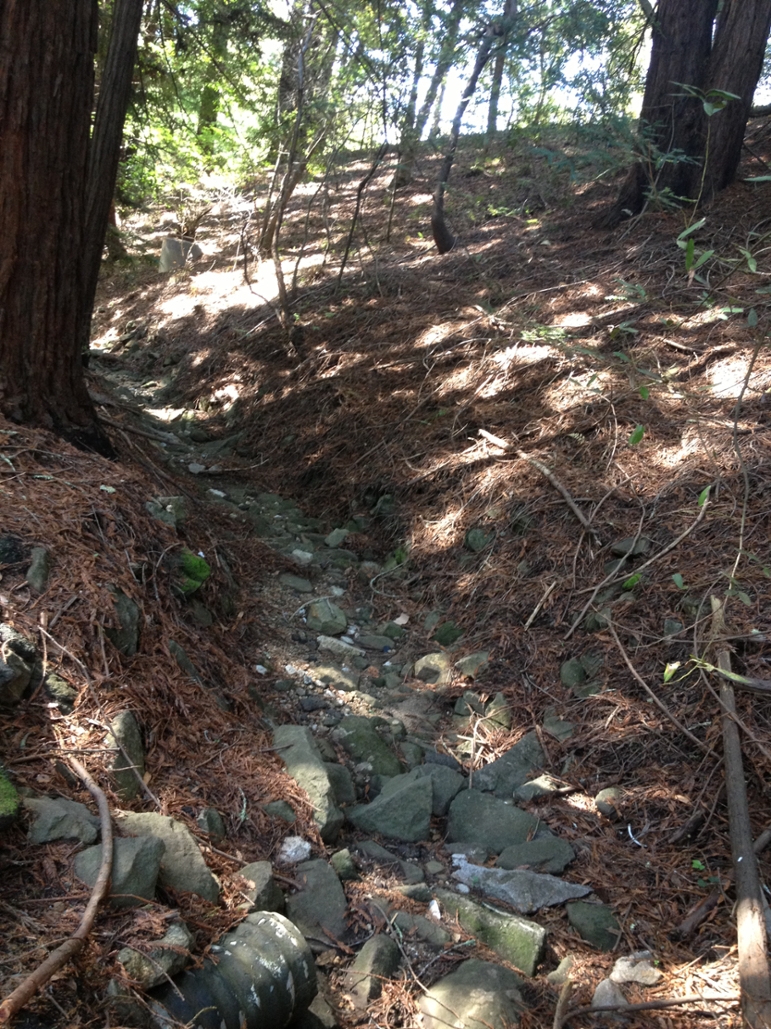Frequently Asked Questions
Frequently Asked Questions
What is storm water runoff?Storm water runoff occurs when rainwater falls on impervious surfaces such as asphalt and buildings. Since it can't sink into the surface, the precipitation flows to the lowest point, collecting any contaminants, soil or debris in its path. Storm water runoff can erode unstable soil, causing the storm water to become contaminated with sediment. The most effective way to ensure clean storm water is to properly manage potential contaminants in order to eliminate the possibility of impacts on storm water quality.
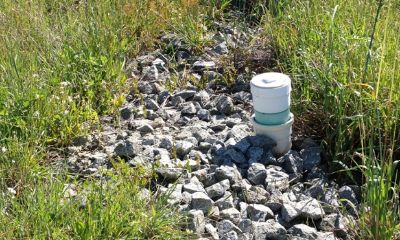
Level Spreader Natural Drainage System
(Photos courtesy of UCSC Storm Water Management Program)
What kinds of drainage systems does UCSC use?
UCSC maintains two types of drainage systems: sanitary sewers and storm drains. Sanitary sewers collect the waste water generated inside buildings, such as sink, shower and toilet discharges. The waste water is then conveyed by pipes to the City waste water treatment plant, where it is treated before being discharged to Monterey Bay.
UCSC's storm drains collect rain water runoff from streets, parking lots, loading docks, roofs, and landscaped areas. Most UCSC storm drains discharge to natural drainage areas across campus. However, where additional treatment is needed, some form of treatment technology is used to minimize our impact on local eco-systems.
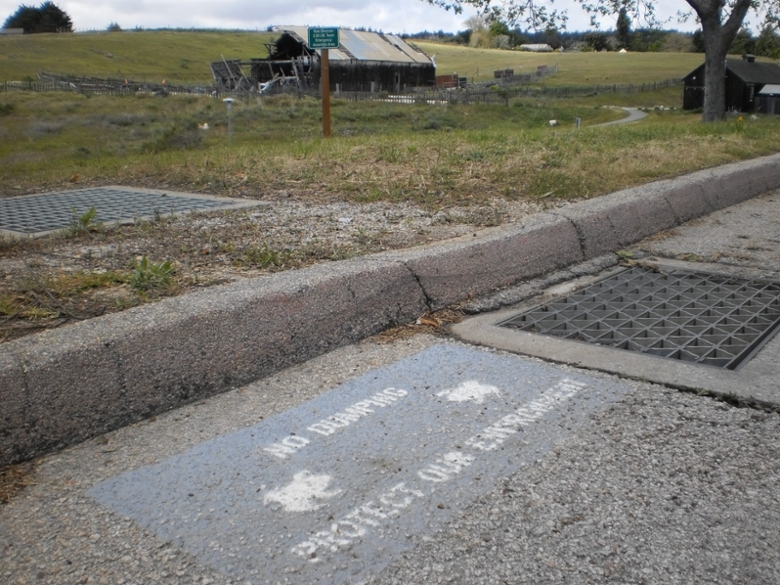
UCSC Storm Drain. (Photos courtesy of UCSC Storm Water Management Program)
What kinds of contaminants might get into storm water?
The EPA reports that common storm water contaminants include: oil and grease from parking lots; pesticides, herbicides and fertilizers from lawns and landscaped areas; soapy water from carpet cleaning and vehicle washing; sediment from construction projects; loose trash such as cigarette butts and soda bottles, and many other sources associated with everyday activities. There are many simple things that everyone can do to help prevent storm water contamination. To learn more about how you can avoid polluting storm water runoff, check out our 10 tips!
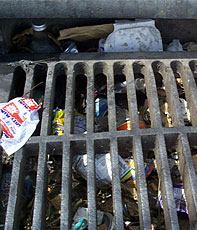
It is imperative that we prevent pollution from entering the storm drains, such as litter,and spills. (Photos courtesy of CWEP (top)
Here at UCSC, many of those pollutants such as pesticides and fertilizers, and activities such as car washing are already controlled. However, we must always be watching for new opportunities to prevent storm water contamination.
What is UCSC doing to protect their storm water quality?
Currently UCSC implements the Industrial Permit and complies with the Construction General Permit. Whenever possible, segments of our storm drain system utilize technology and methods to treat storm water and minimize erosion to help prevent pollution at the source and keep all areas of our campus clean.
UCSC is also implementing a Storm Water Management Program that identifies policies, procedures and activities that protect water quality, including: promote public participation in pollution prevention efforts, find and eliminate non-storm water discharges to waterways, manage construction impacts, update design standards for new development, implement pollution prevention measures for campus operations, and increase awareness of our shared responsibility to keep our waterways clean!
For more information about these topics or any aspect of our Storm Water Management Program, please contact Storm Water Manager at (831) 459-4840.
